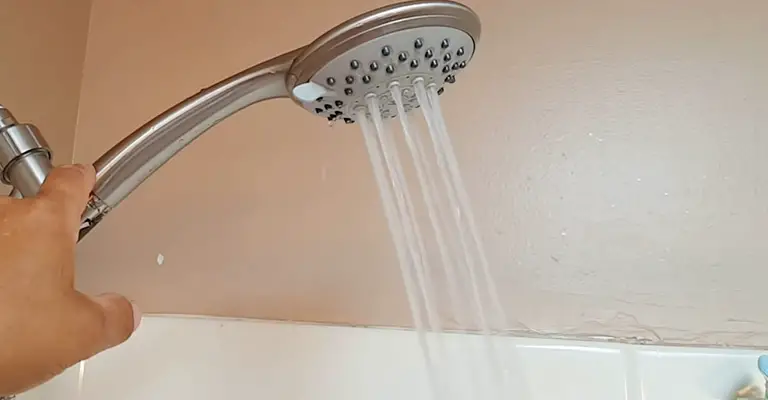Sudden changes in water pressure within your shower can be both surprising and concerning.
When you turn on the shower and find that the water pressure is unusually high, it can lead to a less-than-enjoyable bathing experience and potentially even cause damage to your plumbing fixtures.
Understanding the reasons behind a sudden surge in water pressure is crucial to address the issue effectively and prevent any negative consequences. Then, what is the cause of the sudden increase in my shower pressure?
There is likely to be a problem with the water restrictor valve when misaligned. A slipped or misaligned water restrictor can result in a flow rate greater than 2.5 GPM or your shower head’s flow rate.
In turn, the pressure increases in a sustained manner. A broken water pressure regulator can also increase the pressure in the water.
Air trapped in pipes can increase water pressure. The restrictor valve on your shower head may be malfunctioning. You may have high water pressure if you hear a banging in your plumbing pipes, also known as “water hammer.”
Understanding Why Your Shower Pressure Suddenly Increased & Fixes
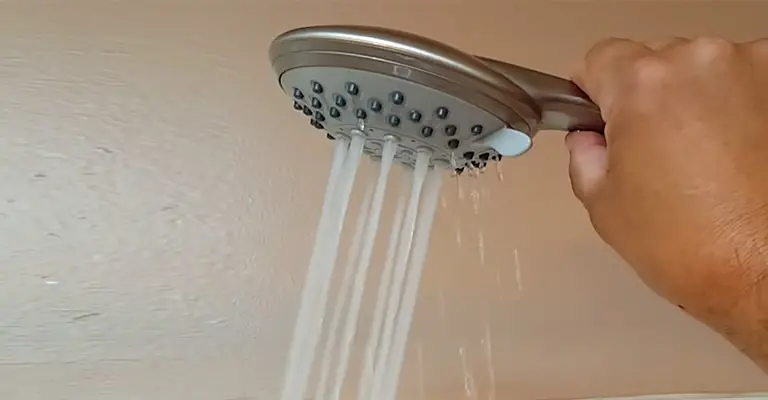
Since there are so many different possible causes of shower problems, it can be challenging to diagnose them.
Occasionally, a sudden and sustained spike in water pressure can occur because of a misaligned or slipped water restrictor, which can easily be repaired.
You can also adjust the pressure of your shower with some other, but unlikely, things. As of January 1, 1994, American shower heads must have a flow rate of 2.5 gallons per minute (GPM).
As a result of this regulation, manufacturers have added a mechanism to shower heads called a water restrictor valve or water saver that limits the flow of water. Plumbing fixtures, such as the water restrictor valve, often wear out over time.
It is easy to realign the water restrictor valve, which is done by removing the shower head with an adjustable wrench or pliers and then reinstalling it with your hands or a flathead screwdriver.
In the case where the washer or disc completely wears out, you can replace the shower head or buy individual restrictor valves from your local hardware store.
Try A Simple Fix First
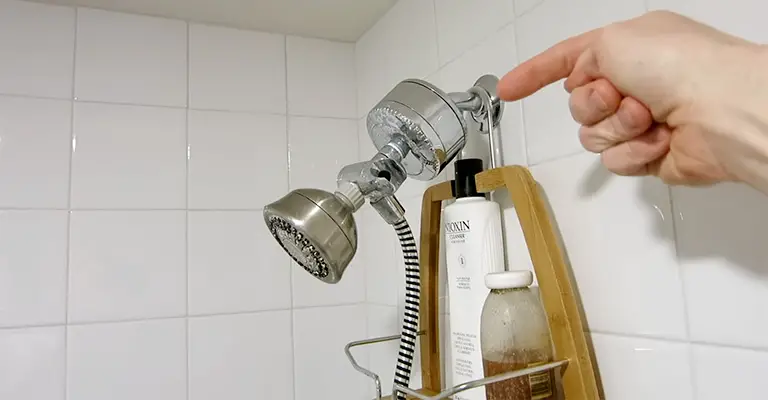
Reduce the pressure using water valves usually found in the wall or under the floor near the shower controls.
Set the hot and cold shutoffs back approximately half, or just use the shower as you usually would. After the valves are adjusted, the flow and pressure should be as you like it.
By changing the hot or cold settings on your shower control, you will be able to change the temperature of the water. You can also control the max pressure and temperature through this method, though you may need to experiment a little.
It’s possible to adjust pressure and temperature within the valve body of a one-handled shower control.
The installer’s manual is necessary for this adjustment. A picture will be shown to you to show you how to adjust the position of the limit disks inside the valve body. Generally, these are found on newer units that protect against scalds.
Air In The Water Lines Often Leads To Sputtering
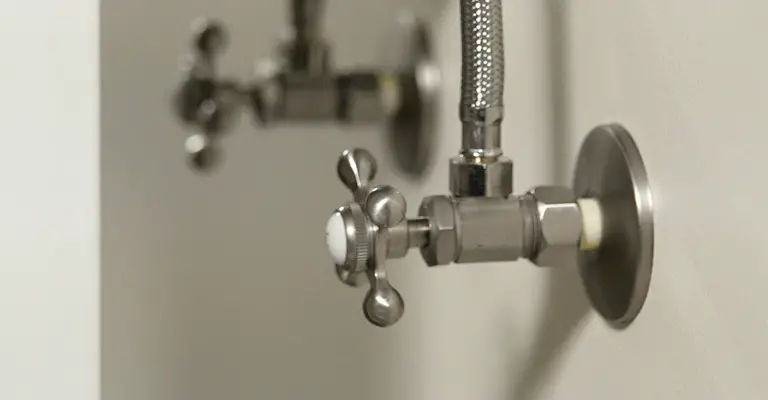
The water lines in your home may have been damaged by air if you recently hired a plumber to make repairs or alter something or if the home is in a new development with active construction.
Sputtering or inconsistent water flow can often be attributed to trapped air rather than drastic pressure changes. You must bleed your lines if there is trapped air in them.
Reduce Flow By Adjusting The Water Shut-Off Valve
Usually found in your bathroom or the neighboring room across from your shower wall, the shut-off valve affects only the water in the shower.
Limiting the amount of water entering your shower is possible by closing the pipe halfway. Adjusting the temperature can be tricky due to the possibility that all hot and cold water will be reduced to the same extent.
Adjust the valve while another person feels the water temperature. This ensures an even temperature.
Likely Not The Shower Valve Or Cartridge
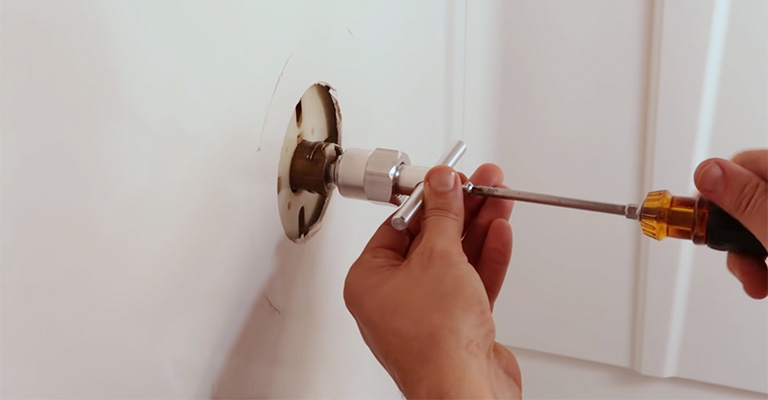
There may be a mechanism in shower valves that balances both pressure and temperature.
Still, unfortunately, it is designed for water that comes into the shower rather than water that leaves. This means replacing it would add unnecessary costs and have no effect.
Clean The Shower Head For Even Flow And Pressure
Eventually, mineral deposits and debris will block nozzles, redirecting water to fewer outlets. There won’t be a sudden rise in pressure; however, it may gradually increase over time.
If you want your shower head to perform optimally, clean and scrub it regularly to avoid debris and buildup so that you can ensure even flow and pressure.
Other Causes Of Sudden High Water Pressure In The Shower
Residential water supply systems generally have a design pressure of 40 to 60 PSI. The pressure might even reach 80 PSI in some cases. However, if it exceeds 80, your water system must be diagnosed and fixed.
In other words, household water systems could be affected by a variety of damaging levels.
You may be experiencing high pressure in your shower for many reasons. The entire water system might even impact you. There are many common ones, including:
Water Hammer in Water System
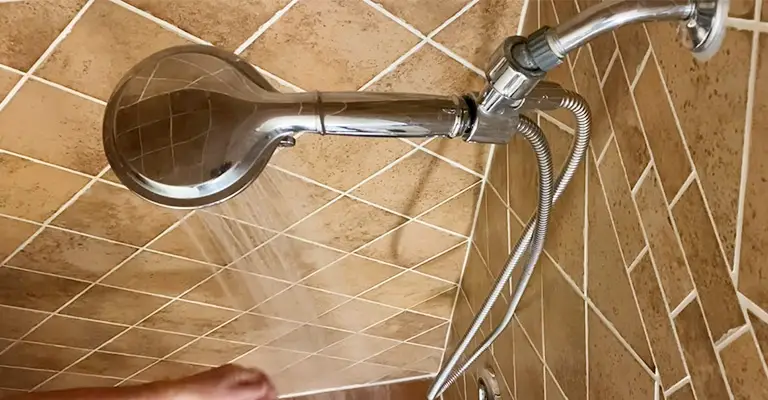
An actual water hammer is not a physical object but a phenomenon. When the water pressure in the piping increases, the water control system may be to blame.
Sometimes, fast-closing shut-off valves prevent water from flowing through the pipes. In some cases, closing valves are used to change the direction of water flow.
Thus, high-pressure shockwaves are created inside the pipelines. It is possible for high water pressure to occur due to the water hammer phenomenon.
A Faulty Pressure Regulator
Generally, a water pressure regulator is installed in the main water line for hilly regions thanks to the high water pressure set by the municipality.
By regulating the pressure, the water pressure stays within an expected range. Faulty or damaged pressure regulators will result in high water pressure.
High-Pressure Supply
You might experience high water pressure in your water supply system if you live in an area like Colorado that has many hills. It is also normal for people who live near fire hydrants or in high-rise buildings to have high water pressure.
This is because high pressure is initially set to ensure adequate water supply to high hills, high-rise buildings, and hydrants.
Is The Problem Isolated To Just Your Shower?
You should adjust the water line coming into the house if other plumbing fixtures in your house start to experience a sudden rise in pressure.
Reduce the water flow entering the house by a slight movement of the water line. Further, we recommend contacting the water utility to see if they have any system-wide issues.
What Are the Consequences of High-Pressure Water in Your Shower/Water System?
There might be times when a high-pressure shower would be fun. However, most of the time, it damages your entire water system and appliances as well.
Water Heater Might Get Damaged (Danger!)
It is possible to damage the water heater if there is consistent water pressure. Taking such a step could put safety at risk. A water heater blast doesn’t even enter my mind! Therefore, you must take the necessary steps as soon as possible.
Water Pressure Is Harmful to Appliances
Earlier this week, you installed all the sanitary appliances like faucets, dishwashers, shower heads, toilet flashers, etc.
It is dangerous for any of these things to be exposed to vast amounts of water pressure. This type of appliance will have a shorter lifespan when exposed to high water pressure.
High Water Pressure Is Damaging to Water Pipes
Whenever water creates pressure, it is a strong object. When a large load and water pressure are applied to your pipes, they continuously shock and push them. Therefore, you must take action as soon as you diagnose the issue.
How Frequently Should You Check The Pressure In Your Home’s Water System?
Ideally, this should be done twice every year. However, you should check the water system if you notice an unpleasant event.
Is 90 PSI Water Pressure Too High?
In fact, it is almost too high for the average residential water system to handle. A maximum pressure of 60 PSI can be applied to residential water systems. In that case, it may be necessary to take action if it exceeds. In addition, sometimes 80 is acceptable.
How to Measure the Water Pressure of Your Water System?
There is no complicated process involved in taking a water pressure reading. You only need a water pressure gauge to measure water pressure. The only thing you need to do is purchase one and connect it to the outside water faucet.
Make sure the gauge shows a reading. In most cases, if the pressure is under 60 PSI, everything should be fine. It can go higher than sixty sometimes, though.
If you’re unsure what to do, you can watch the video here.
Final Words
The high pressure of the water during the summer may be tempting at times. In addition to relaxing, it can provide much satisfaction while showering.
However, too much of anything is not good. Most of the time, when you encounter a sudden increase in your shower pressure, it could be a problem.
You may be thinking: “What is causing my shower water pressure to suddenly increase?” There could be several reasons.
A faulty water pressure regulator, a high-pressure supply from the municipality, low flow shower head restrictor misalignment, trapped air in the water pipe, water hammer, etc., could be the primary reasons.

